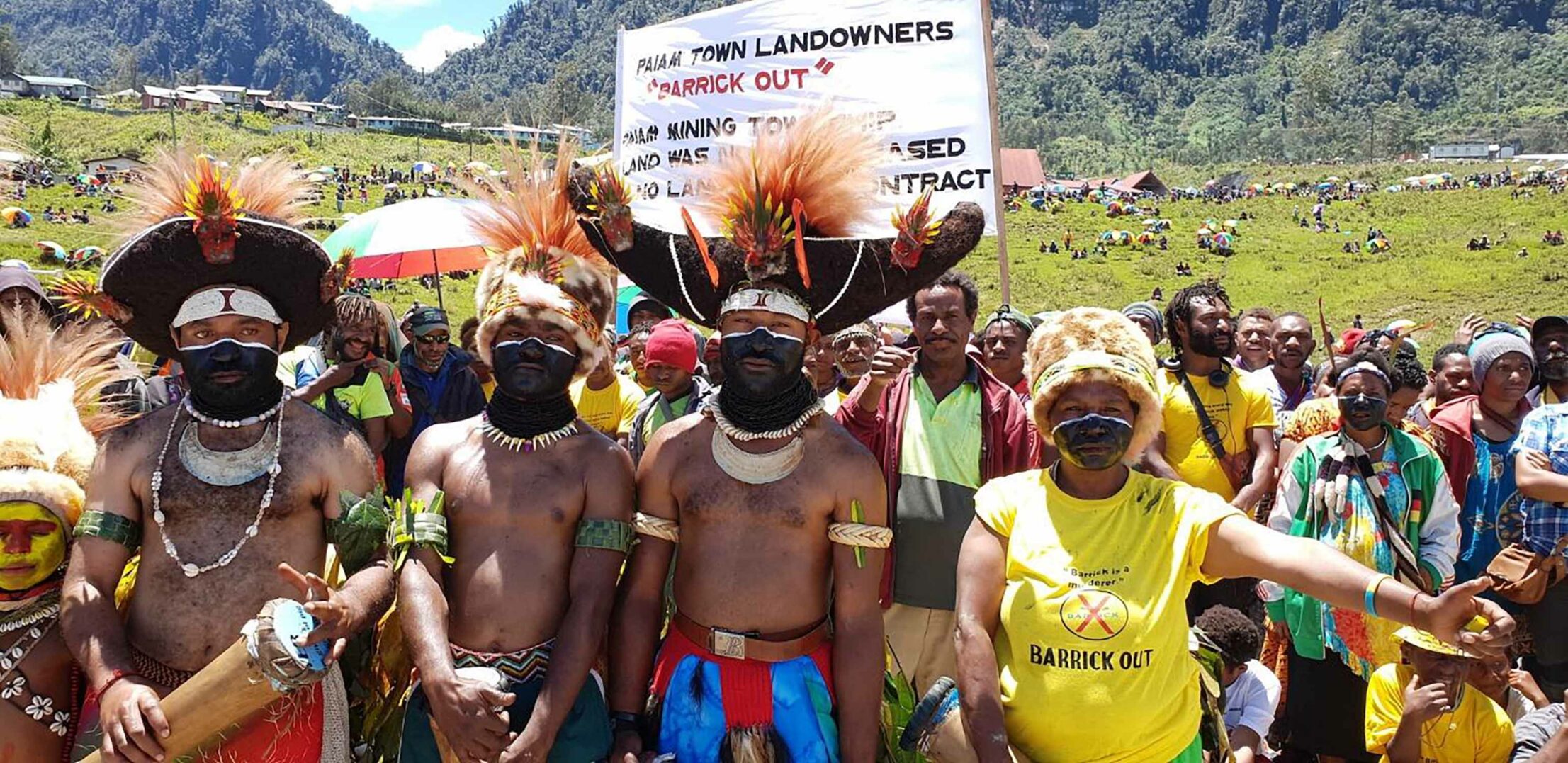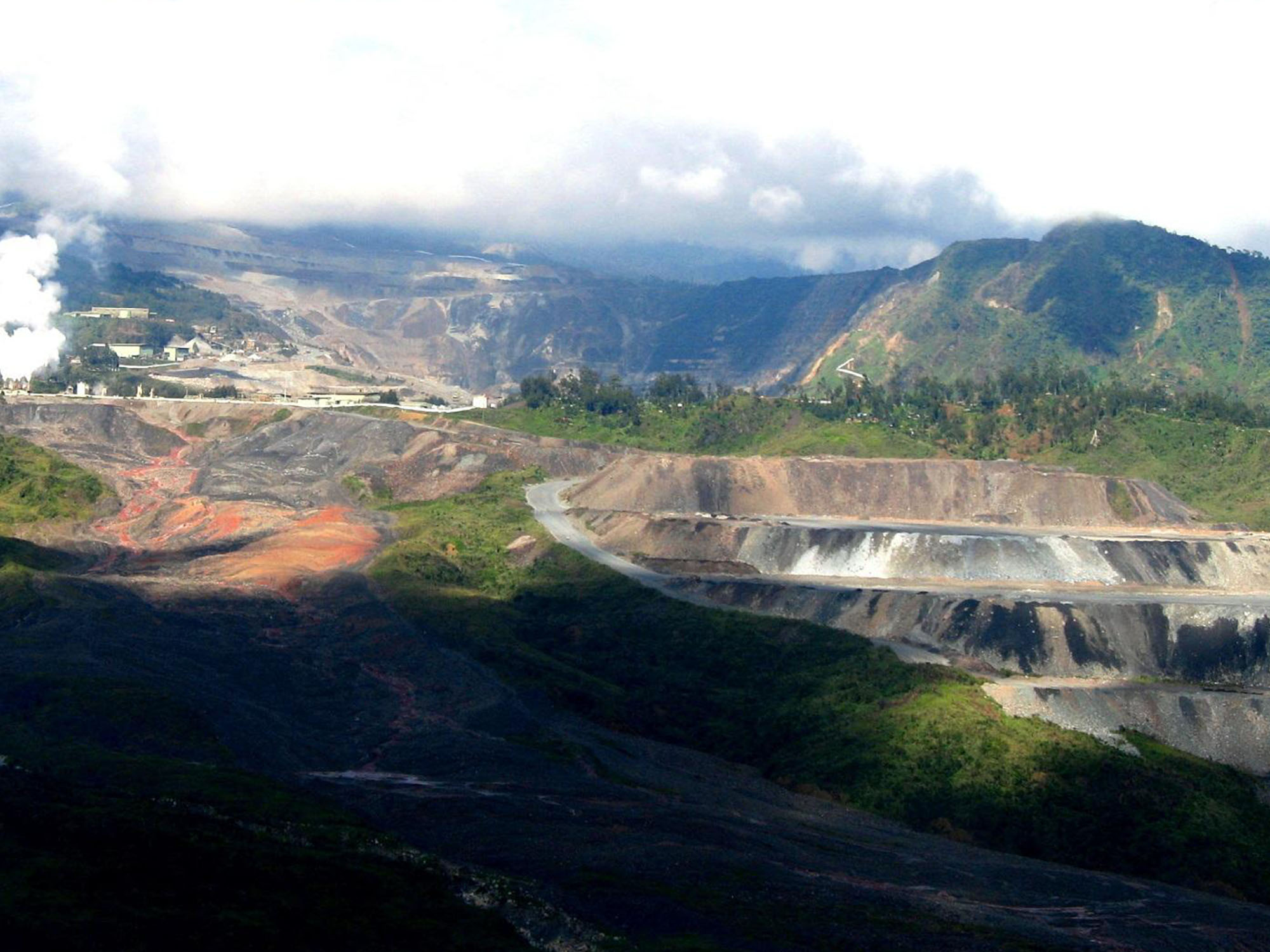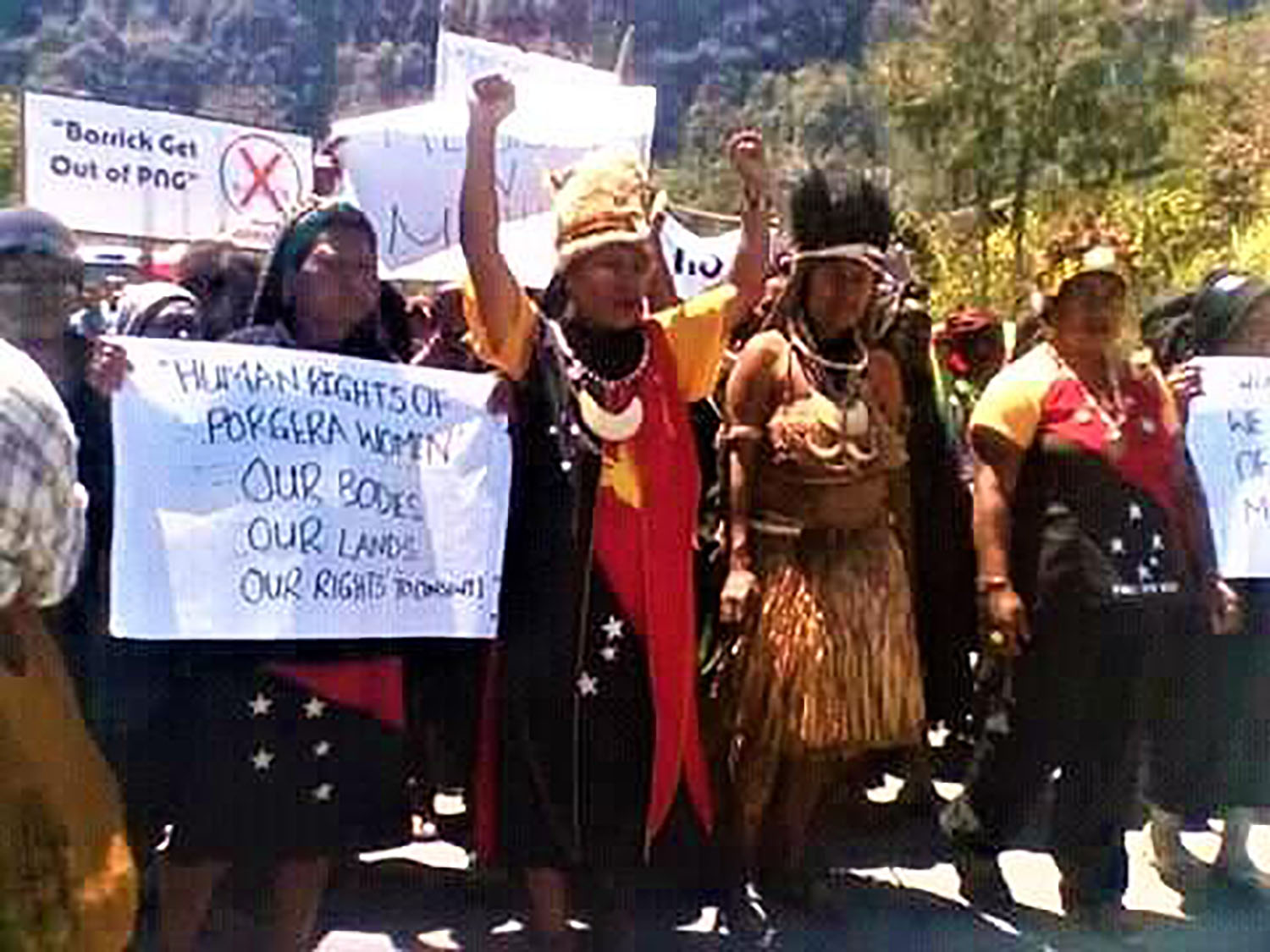Barrick Gold Corp
Porgera Joint Venture mine – Human Rights Abuses
The Porgera Joint Venture (PJV) gold mine is located in Porgera, Enga Province, in the highlands of Papua New Guinea (PNG). In 2006, Canadian mining company, Barrick Gold Corp. (Barrick) owned 75% of the joint venture, which it also operated. In 2007, Barrick increased its control over the PJV mine when it acquired a 95% stake in the local mining company that operates it – its subsidiary, Barrick Niugini Ltd.[1] The company trades on the New York and Toronto Stock Exchanges.

Summary
- Since 1990, this mine has had long-standing and well-documented[2] environmental impacts on surface water related to the uncontained disposal of waste rock and tailings into adjacent river valleys, threatening neighbouring residents’ right to access clean water.[3]
- In 2005, as Barrick was preparing to acquire Placer Dome Inc. (Placer Dome) and its share in the PJV mine, Placer Dome admitted to eight killings of local villagers by mine security and police at the mine,[4] and Barrick received evidence from a local grassroots human rights group[5] detailing several human rights abuses, including killings, torture, arbitrary arrest and beatings allegedly perpetrated by mine security and police. [6] The abuses were also covered in the Canadian media just months after Barrick acquired Placer Dome.[7]
- Since taking over the mine in 2006, Barrick has failed to acknowledge, investigate or address the excessive use of force by mine security and police guarding the mine, despite ongoing reports of killings and beatings of men and boys, beatings, rapes and gang rapes of women and girls,[8] and house burnings.[9]
Eventually, in 2010, Barrick publicly admitted that the company had received detailed allegations of sexual assault perpetrated by mine employees;[10] however, the company’s response involved establishing a highly flawed time-limited grievance procedure which has been highly criticized. Unaddressed human rights abuses continued to be documented and reported.[11]
The Detail
Despite being a resource-rich country, approximately 40% of Papua New Guinea’s population lives in poverty. Instead of spurring meaningful economic development for local communities, the exploitation of natural resources, including gold mining, has fueled violent conflict and environmental destruction. Today, the country continues to be considered one of the most dangerous places for women and girls due to domestic violence, and impunity for high levels of police brutality is rampant.[12] It is within this context that Canadian mining giant, Barrick Gold, has continued to operate its PJV mine.
Since 2005, prior to Barrick’s acquisition of the PJV mine, the company has been informed on various occasions of well-documented cases of alleged human rights abuses, including sexual assault, rape and killings by private security and police forces and environmental destruction at Barrick’s PJV gold mine. Despite these initial warnings and subsequent reports of violence, it took five years for Barrick to respond, and the company’s response has been criticized for being woefully inadequate and failing to address the wide-scale abuses that have occurred at the mine.
A “‘hear no evil, see no evil’ approach to human rights abuses”[13]
In November 2005, the PJV mine and the national police force signed a Memorandum of Understanding (MOU) to jointly guard the PJV mine, and emerging evidence of police violence was making clear what that ‘protection’ entailed for the safety and lives of the local population. On November 4, 2005, in the lead up to Barrick’s acquisition of the PJV mine from Placer Dome, a local group, Akali Tange Association, sent Barrick a letter[14] warning of Placer Dome’s legacy of killings by mine security, including violence directed at local Indigenous Ipili and Engan villagers. The Akali Tange Association also sent a letter and a copy of its 2005 report to Barrick executives at the mine’s headquarters in Papua New Guinea’s capital, Port Moresby.[15] The letter detailed 11 extra-judicial killings by mine security and police.

That same year, the government of Papua New Guinea initiated an official investigation into the deaths.[16] Finally, in an email interview in 2005, Placer Dome’s Patrick Bindon told the news outlet IPS that the mine’s security forces and police had killed eight people since 1996.[17] After the acquisition of Placer Dome in March 2006, Bindon went on to work for Barrick.
News about the human rights violations was clearly public knowledge, yet Barrick continued to remain silent and carry on with business as usual.
Barrick remains silent despite testimonies and human rights investigations
For three consecutive years starting in 2008, Porgerans travelled to Canada to attend Barrick’s annual shareholder meetings and to tell the company’s Chief Executive Officer, the board of directors and the shareholders that PJV mine security and police were beating and killing men and boys and beating and raping women and girls.[18] While in Canada, they also met with Canadian media, Members of Parliament and civil servants at Foreign Affairs, as well as with Barrick officials in Toronto, where Barrick’s head office is located.
Between 2008 and 2009, Harvard and New York University human rights investigators, along with MiningWatch Canada, who had conducted extensive investigations, including three fact-finding missions, and written reports on the extra-judicial killings and rape and gang rape cases,[19] sent three separate letters to Barrick. The investigators requested to meet with the company to discuss the alleged violence and asked to receive copies of Barrick’s reports pertaining to the environmental and human rights impacts of the mine. Barrick’s response, however, was extremely limited. The company did not provide any information about specific killings or documents pertaining to the security structure at the mine.[20]
The researchers also shared the findings of this research in testimonies provided to Canada’s Foreign Affairs and International Development Committee in 2009[21] and 2010[22] and in a legal brief that was tabled.[23] In response to the testimony in 2009, Barrick chose its words carefully, noting that “no cases of sexual assault [have been] reported to mine management” (emphasis added) and that “It is not possible for the [Porgera Joint Venture mine] to investigate an allegation it has never received…”[24] Barrick also questioned whether the women were raped stating that if they had been, there were “numerous avenues” available at the mine for the women to have reported the abuse.

Subsequent testimonies by the New York and Harvard researchers poked holes in Barrick’s purported ignorance of the gang rapes and the killings arguing that there was ample evidence pointing to these abuses, including allegations of rape dating back to 2006, which should have prompted Barrick to carry out a thorough investigation – and that it would not have taken much effort to uncover evidence of the abuses.[25] Finally, in late 2010, Barrick acknowledged the sexual assault allegations[26] by creating a short-term grievance mechanism that has been criticized by human rights experts.[27]
Similarly, despite the existence of witness statements, and autopsy and police reports,[28] to date, Barrick has not responded effectively to the allegations of killings by mine security against boys and men.[29]
